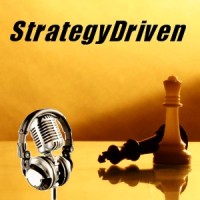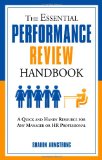Agile Balance – What it is… What it does… How to get it, part 1 of 2
Once upon a time, Jack led Jill up the hill to fetch a pail of water. Subsequently, they found the slope a bit slippery. There was a bit of a spill. After that crown-breaking calamity, Jack vowed to become so nimble that he could easily jump over any candlestick, lit or unlit.
Okay, so that’s not quite how the children’s storybook tells it. But, hopefully, like any good leader, Jack, learned from experience. Bouncing back from the fall, he was exposed to “Agile BalanceTM.” (Jill was quick to follow).
What is Agile Balance? Agile is defined as nimble or mentally quick. Balance is defined as steady, maintaining equilibrium or poise. So, Agile Balance might be defined as someone or something that is nimble, quick, steady and self-assured.
But that’s just the start.
When we peer into nature, perhaps viewing the plants and trees on the hill that Jack and Jill fell from, we won’t see a perfect moment of balance. We see Agile Balance. There is no stasis in nature. Change is constant and everywhere. Plants and animals are growing, waning or dying.
That’s the rhythm to life. And that’s the rhythm to great success, both organizationally and personally. That’s Agile Balance. There is no stasis in individuals or organizations. Whether growing, waning or dying, we change each day. And it’s our choice whether the struggle from that process makes us stronger, or nudges us along as we slip slide down the slope.
As they meet on the garden path in my book The Offsite: A Leadership Challenge Fable, guru/gardener Sam Arthur responds that he is “perfect” when Gwen Kelly asks the polite question, “How are you”. I’ve found that every reader defines Sam’s comment about “perfect” differently. Is it possible that Sam is talking about Agile Balance?
When thinking of Agile Balance, a few of the words that spring to mind are: strength, flexibility, speed, endurance and grace. These are just a few of the qualities everyone should seek and embrace as they reach for the results they desire around performance, productivity and profits.
Let’s take a deeper look at these qualities.
Hi there! This article is available for free. Login or register as a StrategyDriven Personal Business Advisor Self-Guided Client by:
Subscribing to the Self Guided Program - It's Free!
About the Author

. To learn more about Agile BalanceTM, contact Robert at [email protected], follow him on Twitter @RobertHThompson or subscribe to his Leadership Path newsletter at www.leaderinsideout.com.
Want to learn more about Robert Thompson and The Offsite? Listen to the StrategyDriven Podcast interview during which Robert shares with us his insights on the unique leadership challenges associated with today’s business environment.
Podcast: Play in new window | Download (Duration: 31:01 — 42.6MB)
Subscribe: RSS

 StrategyDriven Podcasts focus on the tools and techniques executives and managers can use to improve their organization’s alignment and accountability to ultimately achieve superior results. These podcasts elaborate on the best practice and warning flag articles on the StrategyDriven website.
StrategyDriven Podcasts focus on the tools and techniques executives and managers can use to improve their organization’s alignment and accountability to ultimately achieve superior results. These podcasts elaborate on the best practice and warning flag articles on the StrategyDriven website.
 Sharon Armstrong, author of
Sharon Armstrong, author of  Ed has worked in more than 40 countries with organizations including Booz Allen Hamilton, Satyam, Seer Technologies, National Australia Bank, Larson & Toubro and the World Economic Forum. He is the only Chief Learning Officer to lead two companies to ASTD BEST Award #1 ranking; Booz Allen Hamilton and Satyam Computer Services (only company outside United States to achieve this).
Ed has worked in more than 40 countries with organizations including Booz Allen Hamilton, Satyam, Seer Technologies, National Australia Bank, Larson & Toubro and the World Economic Forum. He is the only Chief Learning Officer to lead two companies to ASTD BEST Award #1 ranking; Booz Allen Hamilton and Satyam Computer Services (only company outside United States to achieve this). Pris has 30 years of experience with Fortune 500 companies around the world. She has received international acclaim for her work in global leadership development, diversity and executive coaching.
Pris has 30 years of experience with Fortune 500 companies around the world. She has received international acclaim for her work in global leadership development, diversity and executive coaching. Stuart L. Hart, author of
Stuart L. Hart, author of